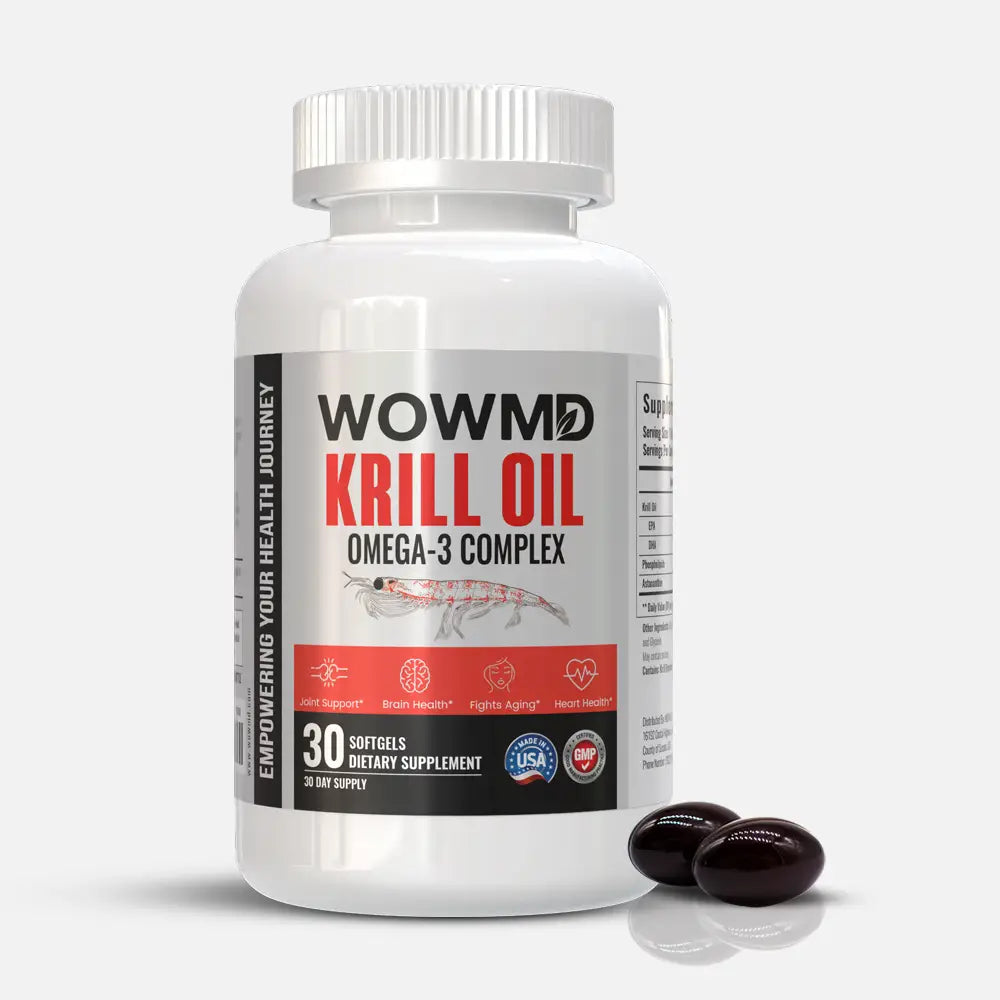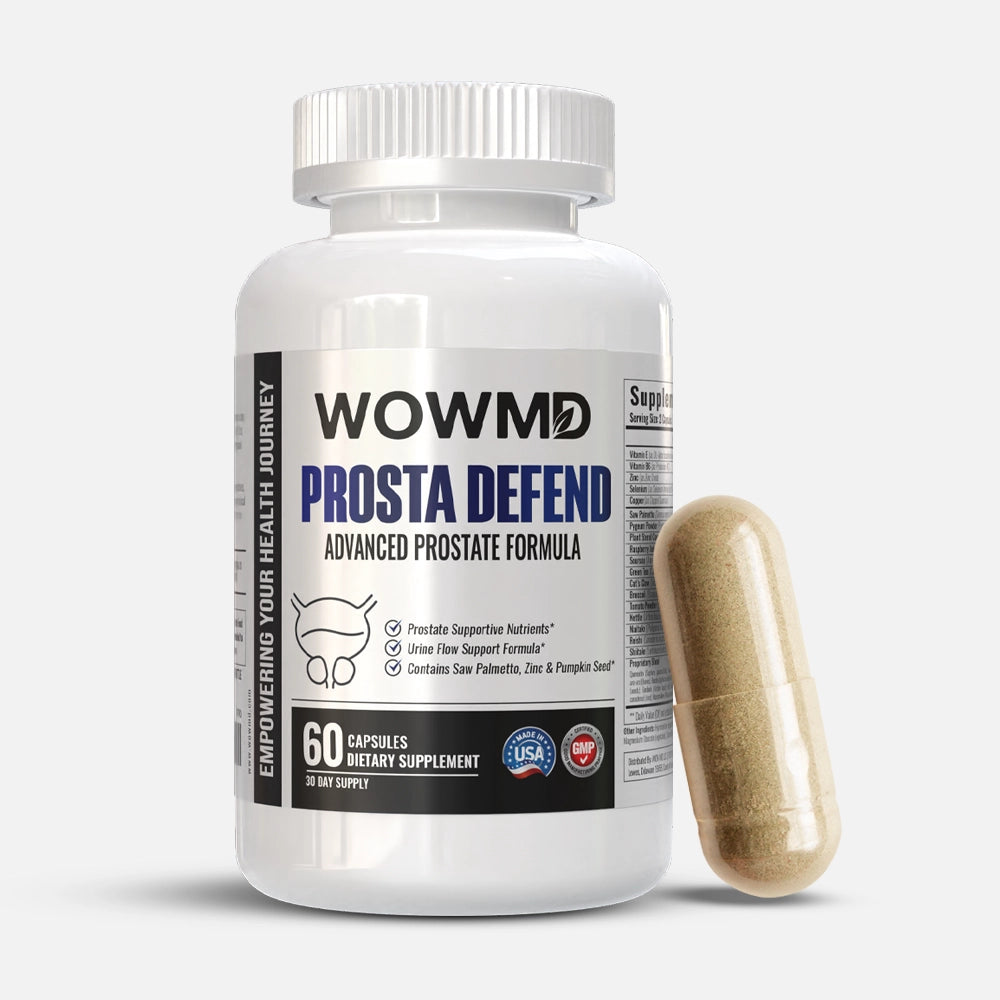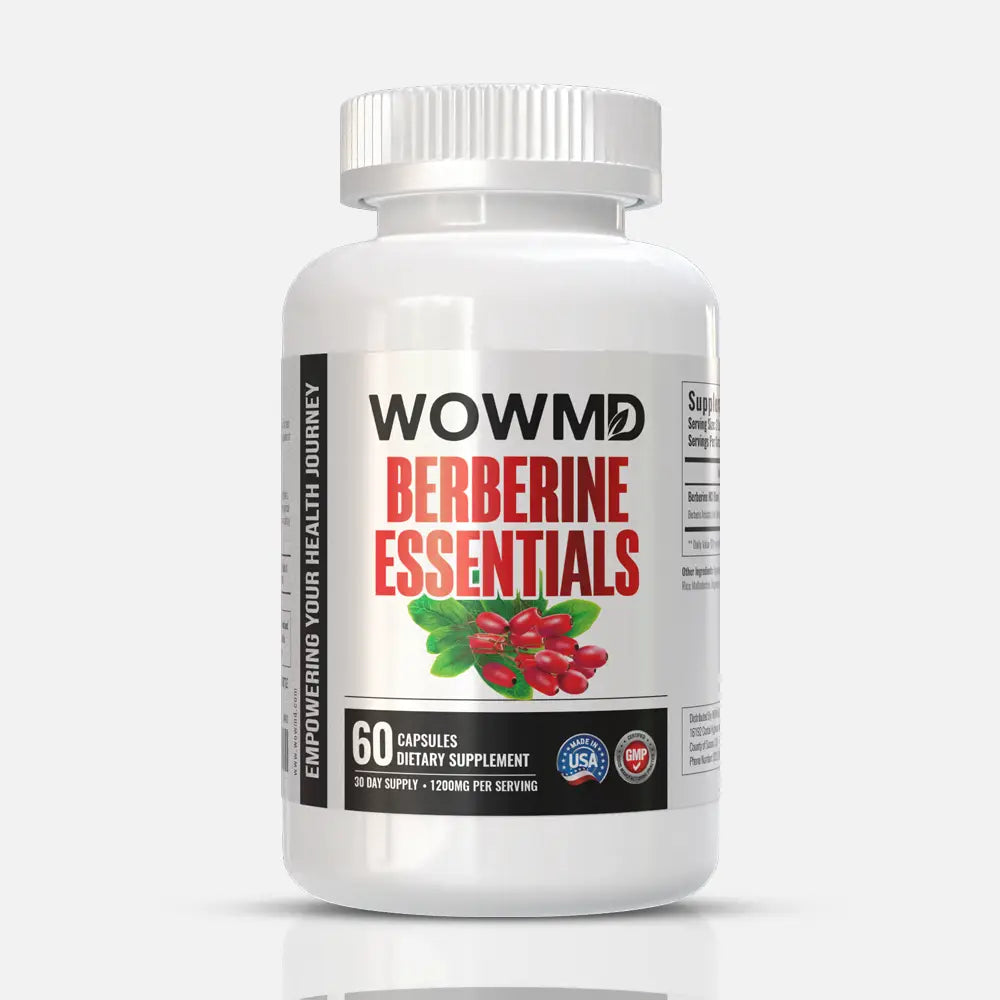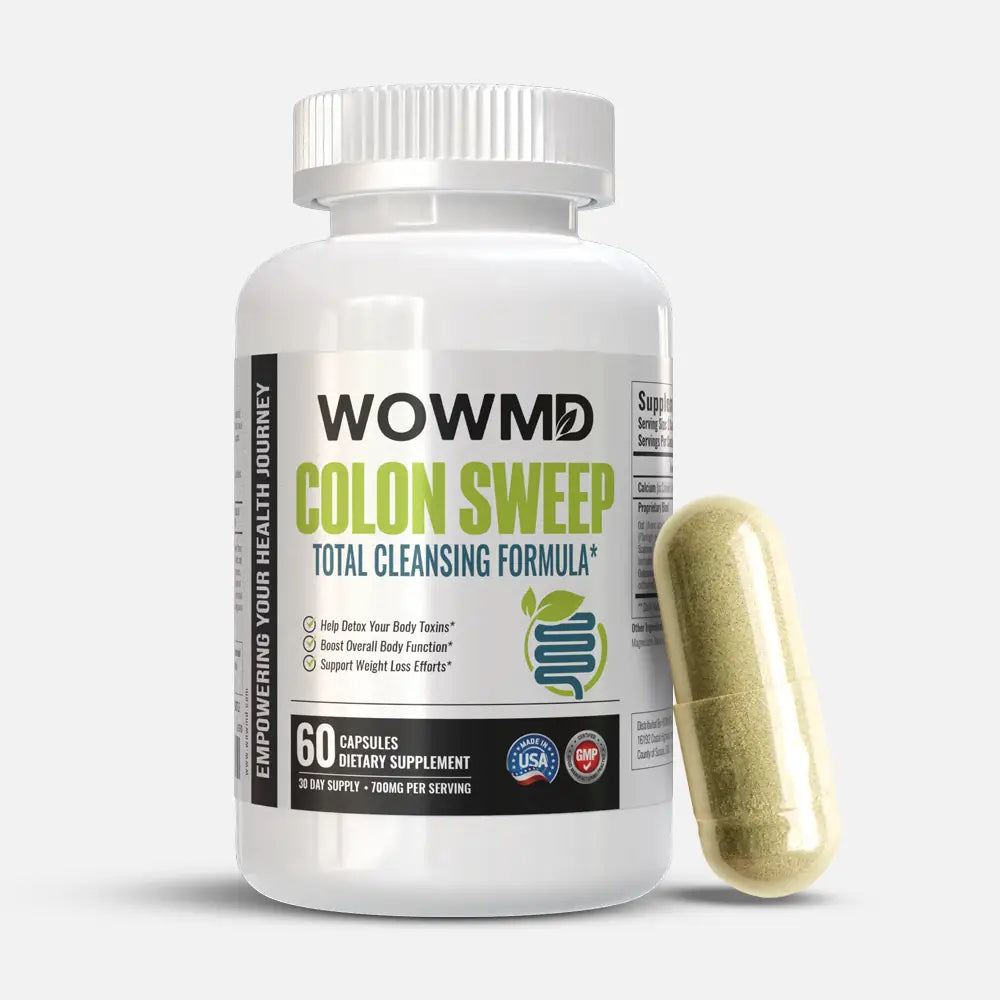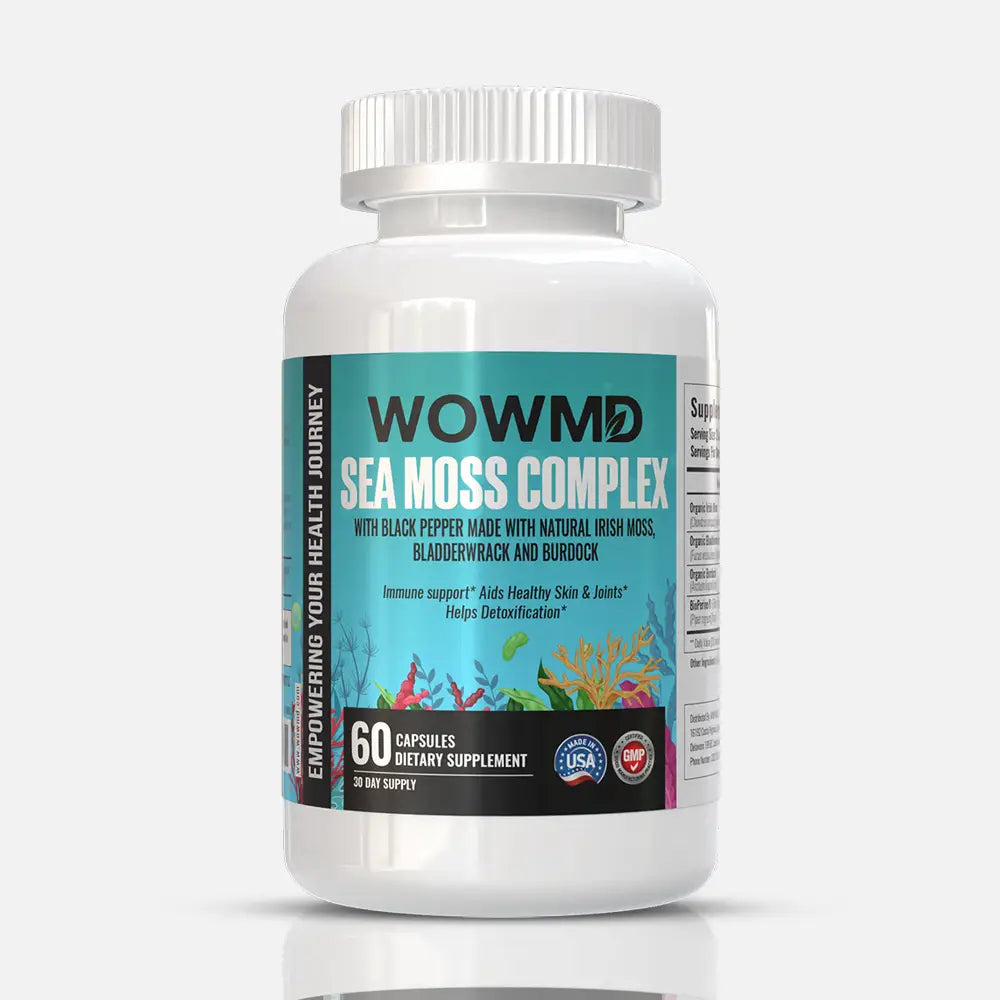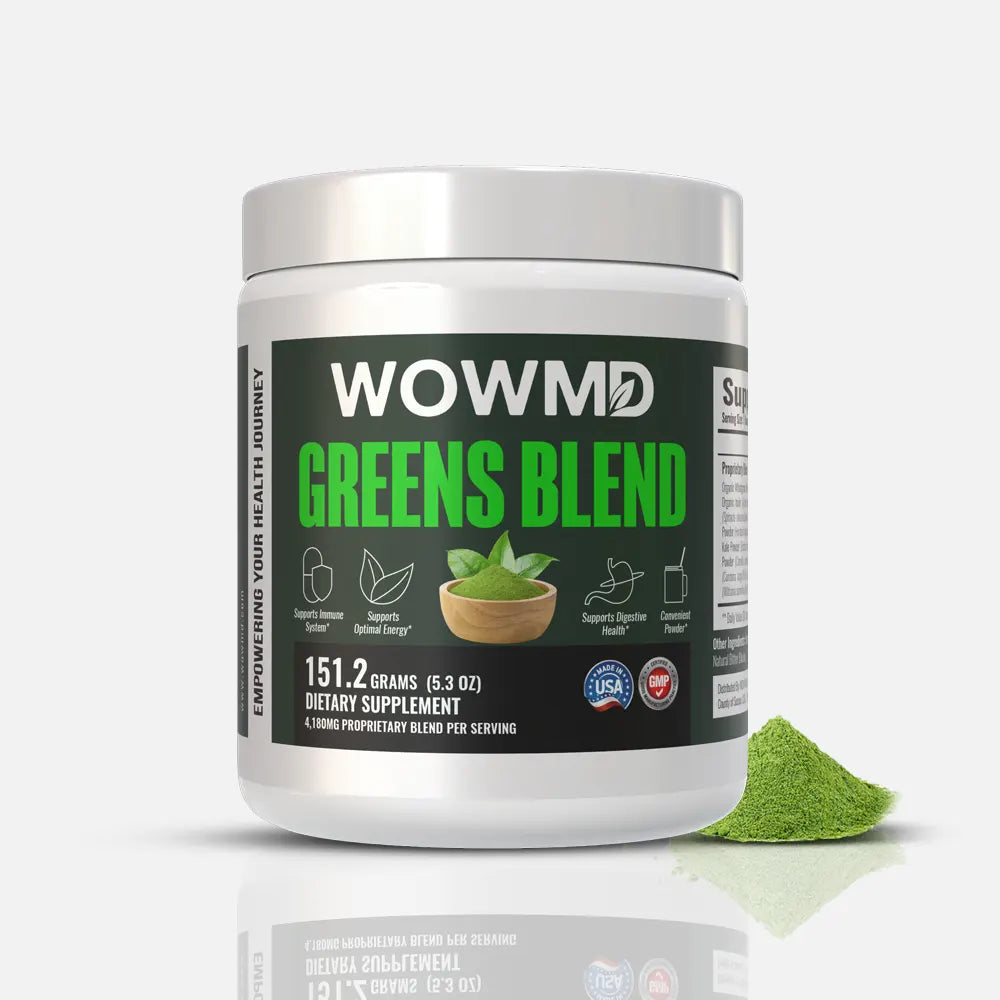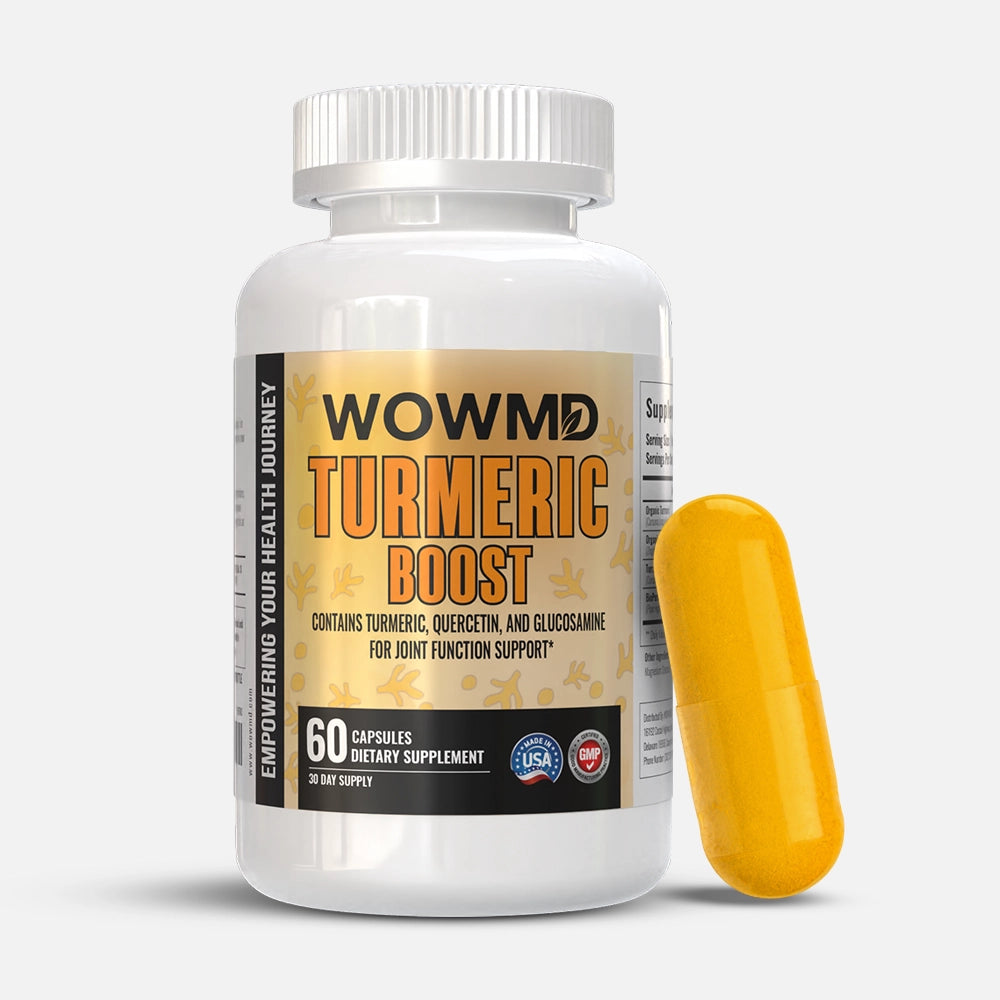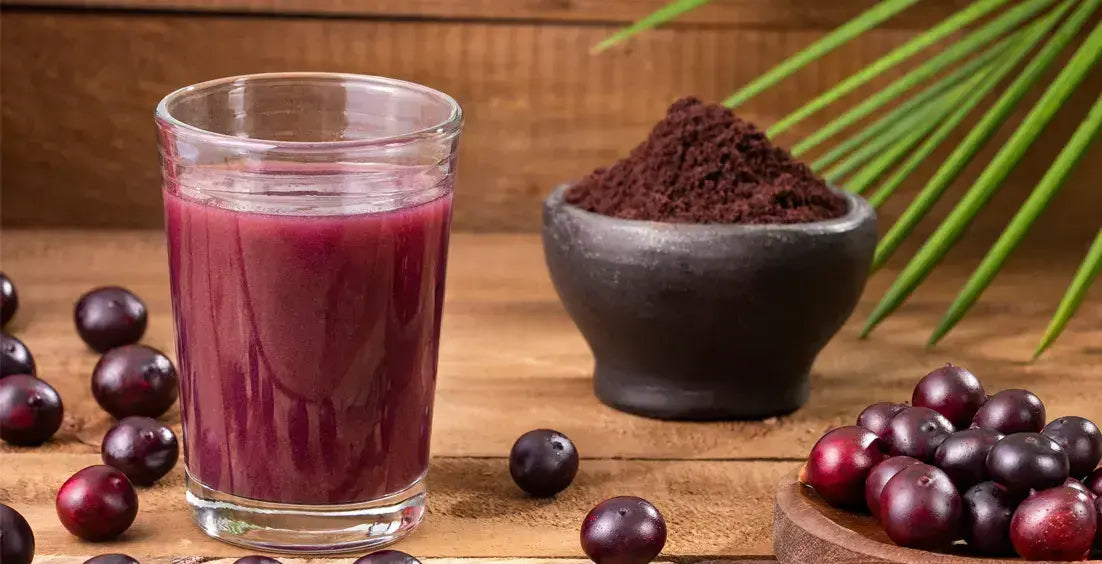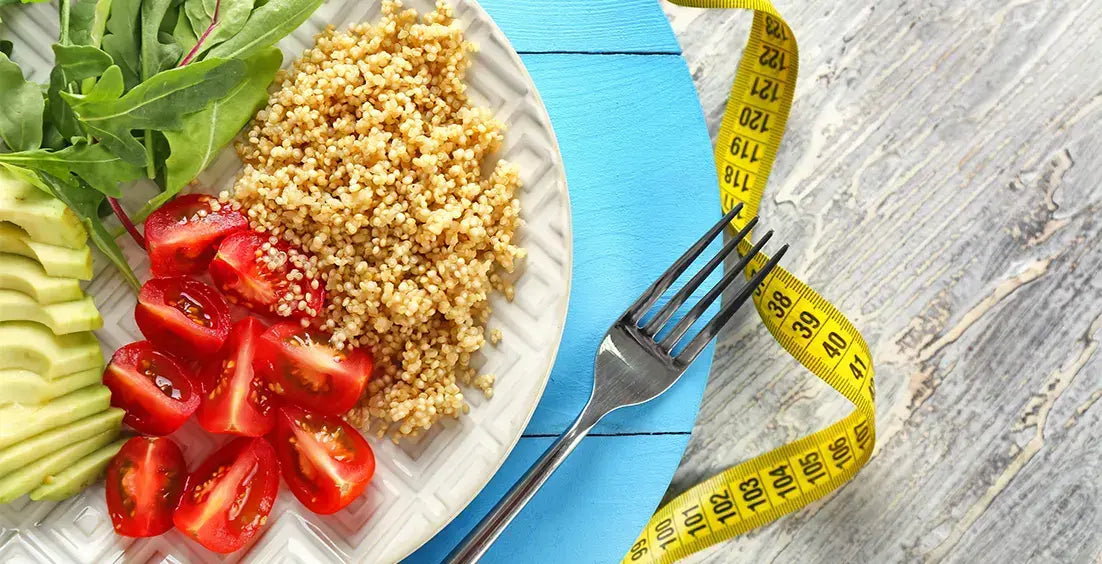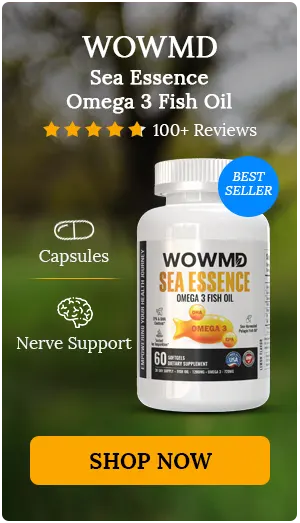Omega‑3 Rich Foods: Unlocking the Power of Essential Fatty Acids
Unlock the power of omega-3s with nutrient-rich foods like salmon, walnuts, and flaxseeds. Learn how these foods support heart, brain, and joint health for overall well-being.
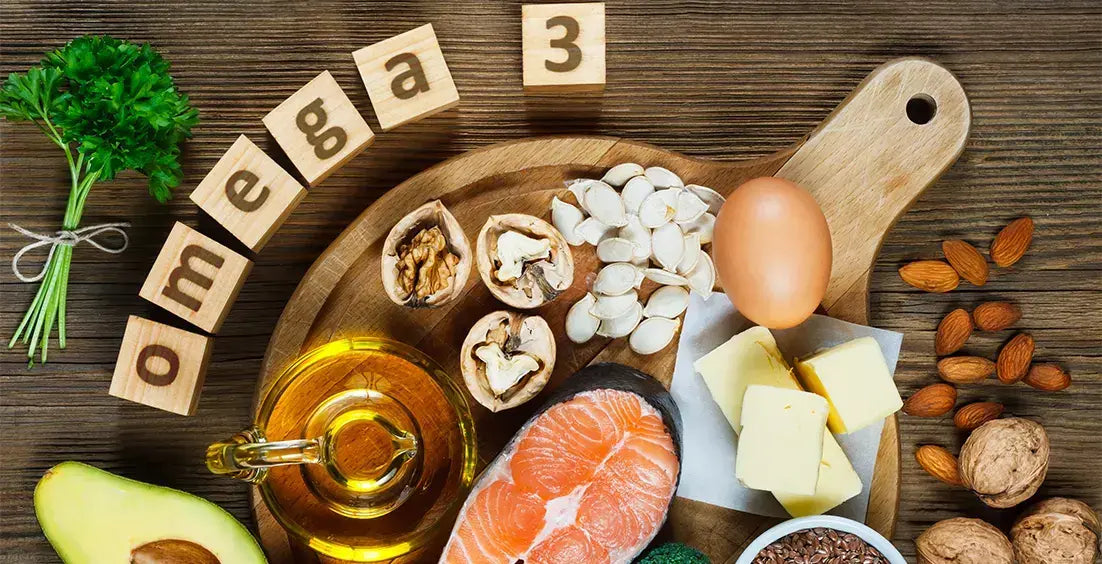
Ever wondered what foods are high in omega-3 fatty acids? These powerful nutrients are essential for your body but can't be produced naturally. This means you must get them through your diet to reap their vast benefits.
From supporting heart health to boosting brain function, omega-3s play a crucial role in maintaining your overall well-being.
Essential fatty acids, particularly EPA and DHA, are the building blocks that help reduce inflammation and support various body functions. The best omega-3 sources include both seafood and plant-based options, which make consuming them accessible for everyone no matter their dietary preferences.
Key Takeaways
- Essential for Well-Being: Omega‑3 fatty acids boost heart, brain, and joint health, making them indispensable for overall wellness.
- Diverse Sources: Top omega‑3 sources include seafood like mackerel, smoked herring, and pre-cooked salmon, as well as plant-based options like walnuts and purslane.
- Balanced Intake: Knowing how much omega‑3 to consume (typically 250–500 mg of EPA/DHA daily) is key to reaping its benefits.
- Risk Awareness: Individuals with low seafood intake, strict plant-based diets, or certain metabolic conditions may be at higher risk for omega‑3 deficiency.
Understanding these essential nutrients and their sources can help you make informed choices for better health.
Understanding Omega‑3 Fatty Acids
Omega-3 fatty acids are special healthy fats that our body needs but can't make by itself. You can only get omega-3 fatty acids from food. The health benefits of Omega-3 fatty acids include their essential role in the body, particularly in the form of EPA and DHA, both of which can help reduce cholesterol and blood pressure if consumed as part of a heart-healthy eating regimen.
Dr. Mark Hyman, Co-Founder & Chief Medical Officer of Function Health
Omega-3 fatty acids are essential nutrients that play a crucial role in maintaining heart health, reducing inflammation, and supporting brain function. Including sources like fatty fish, flaxseeds, and walnuts in your diet can significantly enhance overall well-being.
What are the essential fatty acids? Omega-3 fatty acids are the primary type of essential fatty acids. This form of fatty acid can help both your body and brain work well, by reducing risk of cardiovascular events, supporting cognitive function, and may also help lower risk of mental health conditions like depression.
Your body needs a good balance between omega-3 fatty acids and omega-6 fatty acids to stay healthy.
For good health, you need to get enough omega-3 fatty acids through food or supplements on a regular basis. Many people take fish oil capsules or eat fatty fish to ensure they consume enough of these important fats.
Seafood: Nature's Richest Source of Omega-3s
Seafood is indeed a powerhouse when it comes to the best omega-3 sources, offering a natural abundance of these essential fatty acids. Each variety from the ocean brings its own unique profile of nutrients, making seafood an unmatched source of these vital compounds.
Ever wondered what foods have omega-3? Let's dive into the ocean's healthiest offerings!
Star Players from the Sea
- Mackerel stands out as a top source of omega-3 fatty acids, making it a superstar choice for health-conscious eaters
- From the herring fishery comes various options - smoked and canned herring offer convenient, healthy meals
- Precooked salmon combines ease and nutrition, perfect for busy people who don't want to sacrifice health
- For those seeking luxury, caviar can provide a premium source of omega-3 fatty acids
Small but Mighty Fish
Many people ask, "How do you eat sardines?" These versatile fish taste great straight from the can, on toast, or mixed into salads. You may also wonder if anchovies and sardines the same. While both are small and packed with nutrients, they have very distinct flavors - sardines are milder, while anchovies add a stronger, saltier kick to dishes.
Seafood Variety
What are kippers? These traditional British favorites are actually smoked herring fillets, offering both great taste and nutrition. For a delicious meal, try cod & capers seafood, combining the mild flavor of cod with zesty capers. Sea-level oysters deserve special mention - not only do they contain omega-3 fatty acids, but their oyster shell calcium makes them great for bone health too. Serve them on an oyster serving dish for an elegant presentation.
A common question: Does tuna have omega-3 fatty acids?
Yes! While it contains less omega-3 fatty acids than fatty fish like salmon or mackerel, it's still a healthy choice that can add variety to your seafood intake. Remember, mixing different types of seafood in your diet ensures you get the most nutritional benefits!
Plant-Based Treasures: Nature's Omega-3 Sources
Looking for plant-based omega-3 fatty acids? Nature offers an amazing variety of options beyond seafood! These plant sources are perfect for everyone, especially those following vegetarian or vegan diets.
Nutty Powerhouses
- Walnuts and omega-3 fatty acids go hand in hand - these brain-shaped nuts are packed with ALA (alpha-linolenic acid), a plant-based omega-3 fatty acid.
- One handful of walnuts can help support your heart health and overall wellness.
- While your body converts ALA to EPA and DHA less efficiently than fish sources, these nuts still offer valuable nutrition
Seeds and Greens
Many plant foods are rich in omega-3s:
- Chia seeds: These tiny seeds hold mighty omega-3 benefits
- Flaxseeds: Grind these small seeds in their fresh form for high-quality nutrition
- Purslane benefits: This unique green vegetable contains surprising levels of omega-3s fatty acids. Use in salads for a lemony, peppery taste, or cook like spinach for a unique and nutritious side dish.
Hidden Treasures
Leafy greens and certain vegetables also contain omega-3 fatty acids, though in smaller amounts. For a balanced omega nutrition profile, try combining different plant sources throughout your day. Whether you're vegetarian, vegan, or just looking to add variety to your diet, these plant-based options offer excellent nutritional benefits!
Remember: While plant sources provide different types of omega-3 fatty acids than fish, they're still valuable for your health. Mix and match these foods to get the most benefits!
Fortified Foods: Modern Solutions for Omega-3 Nutrition
Today's food market offers exciting ways to boost your omega-3 intake through everyday foods! Food companies have found creative ways to add these healthy fats to common products you already enjoy.
Smart Shopping Choices
- Omega-3 and milk combinations: Regular milk fortified with healthy fats
- Peanut butter omega-3 versions: Your favorite spread with added nutrition
- Eggs from hens fed special diets: Check the carton to see if your supermarket eggs provide omega-3 benefits
- Bread and cereals with added omega-3s: Check the nutrition label to see if your bread and cereal products contain added omega-3 fatty acids. Products with flax and whole grains will most likely have this added benefit.
What foods have omega-3 naturally vs. fortified?
Natural Sources
- Fish and seafood (highest in EPA and DHA)
- Walnuts and seeds (plant-based ALA)
- Leafy greens
Fortified Options
- Dairy products
- Spreads and condiments
- Breakfast cereals
- Plant-based milk alternatives
Best Approach
Mix both natural and fortified sources in your diet! This gives you the most complete fatty acid profile. Think of it as creating a perfect puzzle - each piece (whether from the sea, plants, or fortified foods) helps complete your nutritional picture.
While conducting our research, we discovered an insightful YouTube video by Dr. Becky Gillaspy that shares the top omega-3 foods and how they support your health.
Omega‑3 Supplements and Measurement Considerations
Most people prefer to get omega-3 fatty acids from the food they eat. However, you can also get omega-3 fatty acids from supplements to help fill any nutritional gaps. People commonly take omega-3 oils in capsule or liquid format and need to know the right amount to get optimal results.
Understanding Measurements
Taking omega-3 supplements can sometimes feel confusing, especially when you're trying to figure out the right amount. Many people wonder how many tablespoons per ounce or how many milligrams are in a tablespoon. Most supplements come with clear instructions to help you get the right dose, whether it's a teaspoon or tablespoon measurement.
Today's market offers various options like green pasture cod liver oil, which gives you omega-3 fatty acids plus bonus nutrients like vitamins A and D. Many companies also create omega-3 fatty acids that combine these healthy fats with other important nutrients, making it easier to support your overall health with just one product.
When choosing your supplement, quality matters just as much as the dose. The best products go through careful testing to make sure they're pure and free from harmful substances like heavy metals. Think of it like choosing fresh fish - you want the cleanest, highest-quality source possible. This is especially important if you rely on supplements as your main source of omega-3 fatty acids.
Pro Tip: Always check the label for dosage instructions, and don't hesitate to ask your healthcare provider about the right amount for your needs. Remember, the best supplement is one that's both high-quality and taken in the right amount!
Culinary Tips and Creative Recipes
Want to make healthy eating more exciting? Let's explore fun ways to enjoy omega-3-rich foods!
Simple Seafood Ideas
How do you eat sardines?
- Toss them in salads
- Mix with pasta and olive oil
- Add lemon juice for extra flavor
- Try them on whole-grain toast
Are anchovies and sardines the same?
While both are small fish packed with omega-3 fatty acids, they have different tastes. Sardines are milder, while anchovies have a stronger, saltier flavor.
Fancy Food Tips
What to eat with caviar whole foods?
- Serve on blinis (small pancakes)
- Top with a touch of crème fraîche
- Add to deviled eggs
What are kippers? These smoked herring fillets are great:
- On toast for breakfast
- With roasted vegetables
- In rice bowls
Portion Guide
Wondering what 3 ounces of salmon looks like? Think of a deck of cards - that's your perfect portion! A 6 ounce piece of salmon fillet gives you plenty of protein and healthy fats. Just remember to enjoy it in moderation, especially if you're watching your mercury intake.
Remember: The key is to have fun while trying new foods. These omega-3-rich options can make every meal both healthy and delicious!
Conclusion
Your journey to better health can start with something as simple as adding omega-3-rich foods to your meals. Whether you choose seafood like herring fishery products, luxury items like Caviar Whole Foods, plant-based options like walnuts and omega-3 fatty acids, each choice helps build a healthier you.
Making It Work for You:
Mix different sources:- Fish and seafood
- Plant-based foods
- Fortified products
- Quality supplements like green pasture cod liver oil when needed
Remember These Key Points:
- Start small and build healthy habits
- Try both traditional and new foods
- Listen to your body's needs
- Make meals enjoyable while being healthy
Good health doesn't have to be complicated. By making simple, smart food choices and enjoying omega-3-rich foods, you're taking care of your heart, brain, and overall wellness. Every healthy meal is a step toward a better you - and that's something worth celebrating!
Remember: The best health plan is one you can stick to and enjoy. Make these nutritious choices part of your daily life and watch how good health becomes a natural habit!
Our Top Picks
About WOWMD Staff
The WOWMD Staff category features a diverse team of writers, each bringing specialized knowledge in areas such as nutrition, fitness, wellness, and more. Articles in this category benefit from insights provided by multiple experts. All content is peer-reviewed and regularly updated to ensure compliance with our editorial standards.
Popular Stories
- Best Acai Berry Supplements: The Ultimate Buying Guide
- Spirulina Benefits for Women: Superfood for Skin & Hormones
- Best Foods for Weight Loss: Healthy Meal Options to Try
- Ashwagandha vs Maca: Which Should You Go For?
- Fish Oil Alternative for Vegetarian: The Best Source for a Plant-Based Diet!
- Lutein and Eye Health
References
- Omega-3 Fatty Acids & the Important Role They Play: https://my.clevelandclinic.org/health/articles/17290-omega-3-fatty-acids#:~:text=There%20are%20three%20main%20types,omega%2D3%20found%20in%20fish
- Essential Fatty Acid: https://en.wikipedia.org/wiki/Essential_fatty_acid
- Kippers: https://www.fao.org/4/x5925e/x5925e01.htm
- Omega 3 Fatty Acids: https://ods.od.nih.gov/factsheets/Omega3FattyAcids-Consumer/
- Mercury and Fatty Acids in Canned Tuna, Salmon, and Mackerel: https://www.researchgate.net/publication/227634436_Mercury_and_Fatty_Acids_in_Canned_Tuna_Salmon_and_Mackerel
Evidence Based Research
This WOWMD content has been reviewed, as well as checked for facts, so as to guarantee the best possible accuracy.
We follow a strict editorial policy, especially related to the sources we use. Our articles are resourced from reputable online pages, with research drawn from academic institutions and peer-reviewed studies. You can click on the numbers in the parentheses (1, 2, etc.) and check out those references.
The feedback form on this page can be used to report content that is not accurate, up-to-date or questionable in any manner.
We do NOT intend for the information presented through our articles to replace the medical relationship with a qualified physician, nor does it represent specialized advice.


 Skin Detoxification Bundle
Skin Detoxification Bundle Complete Weight Loss Bundle
Complete Weight Loss Bundle Heart Care Bundle
Heart Care Bundle Better Immunity Bundle
Better Immunity Bundle  Men's Immunity & Prostate Health Bundle
Men's Immunity & Prostate Health Bundle Stress + Energy + Wellness Combo
Stress + Energy + Wellness Combo  Energy Booster Combo
Energy Booster Combo Natural Skin Care Bundle
Natural Skin Care Bundle Workout Supplements Combo
Workout Supplements Combo Cognitive Health & Vision Combo
Cognitive Health & Vision Combo Joint Health Support Combo
Joint Health Support Combo